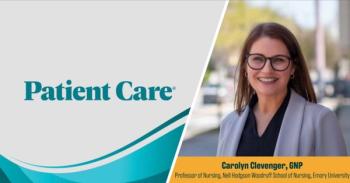
7 Questions on Complicated Headaches
Primary care clinicians may be the first to note an abnormal headache pattern that calls for referral. What do you know about these not-so-simple headaches?
Primary care physicians may be the first to detect a headache pattern that suggests more complex issues that require evaluation and possibly treatment. Find out how much you know about a few headaches that are not your basic migraine.
Question 1.
Answer: E. All of the above
Multiple variations of migraine with aura were classified as complicated migraine by the International Classification of Headache Disorders 3 beta edition in 2013, including hemiplegic migraine, alternating hemiplegia of childhood, migraine with brainstem aura, retinal migraine, ophthalmoplegic migraine, Alice in Wonderland syndrome (AWS) and acute confusional migraine (ACS).1
Question 2.
Answer: C. A rare headache variation that mostly affects children
Acute confusional migraine (ACS) is a rare headache variation that is mostly seen in the pediatric population, with a reported incidence of 0.45% to 7.8%.2 Authors of an early 2018 paper in Brain Sciences3 described ACS as “a multiphasic brain disorder, often with a premonitory and postdrome phase associated with the headache.” The pain is usually unilateral, of moderate-to-severe intensity, lasting 4 to 72 hours. It is sometimes accompanied by nausea, vomiting, sensitivity to light, sound and/or movement, and in some cases, visual auras.3
Question 3.
Answer: A. True
Headache is recognized as the most common pain condition among children and adolescents. Specifically, migraine with aura is quite common in childhood, with prevalence increasing throughout childhood and starting as early as age 3 (1-3%), and generally ranging from 14-30% in children and adolescents.1,4 Some rare forms of migraine also appear first in childhood, including alternating hemiplegia of childhood, which can start as early as 3 months, and acute confusional migraine, first described in children aged 8-16 years of age.1
Question 4.
Answer: A. Binocular disturbances and scotomata
Three types of visual symptoms have been described in children with migraine with aura.1 Binocular disturbances and scotomata (a blind spot that appears like an island surrounded by normal vision) are by far the most frequent of these symptoms, reported in up to 77% of cases, followed by distortions and hallucinations in 16% and monocular visual disturbances in 7%.
Question 5.
Answer: A. There do not seem to be any specific symptoms that characterize a brain tumor headache.
Authors of a 2014 review5 state, “There do not seem to be any symptoms that characterize a brain tumor headaches in particular.” They pointed to individual studies showing variations in reported severity and pain type associated with brain tumor headache; headaches were frequently described as “tension-type” and also “migraine-like.” Other studies reported pain as shooting or throbbing, while headaches not associated with increased intracranial pressure were described as milder. Patients with a previous history of headache were more likely to develop a headache following a brain tumor, suggesting a possible shared pathology between primary and tumor-related headaches.
Headaches are as common in brain tumor patients as in the general population (estimated to occur in 33% to 71% of brain tumor patients), and they are usually accompanied by other symptoms. Only 2% reported headache as an isolated symptom.
Question 6.
Answer: E. All of the above
Although the mechanisms remain unclear, multiple factors have been implicated in the pathophysiology of pituitary headaches, including tumor size, cavernous sinus invasion, traction or displacement of intracranial pain-sensitive structures, and hormonal hypersecretion. Most of the available data are from retrospective studies that have not provided convincing evidence. Gondim et al6 and Levy et al7 both reported that pituitary headaches may result from more than pressure caused by structural changes involving tumor size and cavernous sinus invasion, and disease activity (marked by inflammation and hormonal changes) may also be involved.
Question 7.
Answer: A. True
Migraine with aura is the third most common condition that mimics stroke (after seizures and psychiatric disorders). An estimated 18% of thromboembolic treatments given inappropriately are for migraine with aura initially misdiagnosed as stroke. Thromboembolytic treatment does not have benefits in migraine with aura, although a recent systematic review8 reported that limited studies suggest the procedure is not likely to cause harm, as it is associated with few adverse events.
References
1. Blumenfeld AE, Victorio MC, Berenson FR.
2. Verma R, Sahu R, Jaiswal A, Kumar N.
3. Farooqi AM, Padilla JM, Montieth TS.
4. Spiri D, Rinaldi VE, Titomanlio L.
5. Nelson S, Taylor LP.
6. Gondim JA, de Almeida JP, de Albuquerque LA, et al.
7. Levy MA, Jager R, Powell M, et al.
8. Terrin A, Toldo G, Ermani M, Mainardi F, Maggioni F.
Newsletter
Enhance your clinical practice with the Patient Care newsletter, offering the latest evidence-based guidelines, diagnostic insights, and treatment strategies for primary care physicians.




















































































































































































































































































